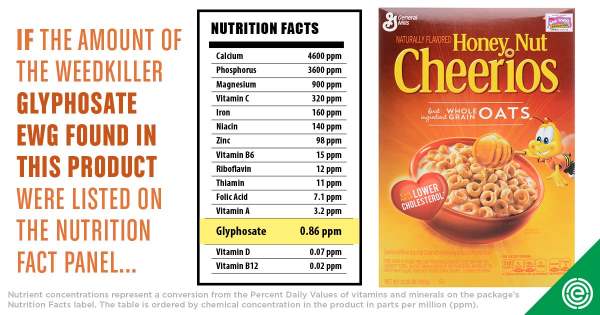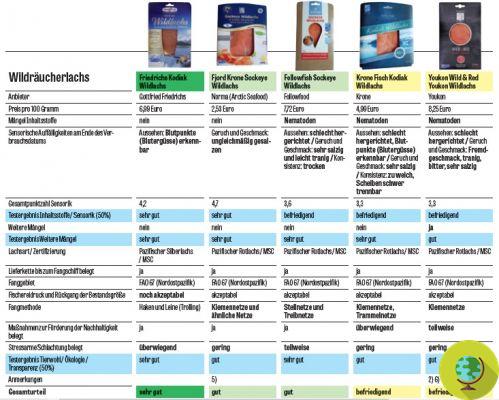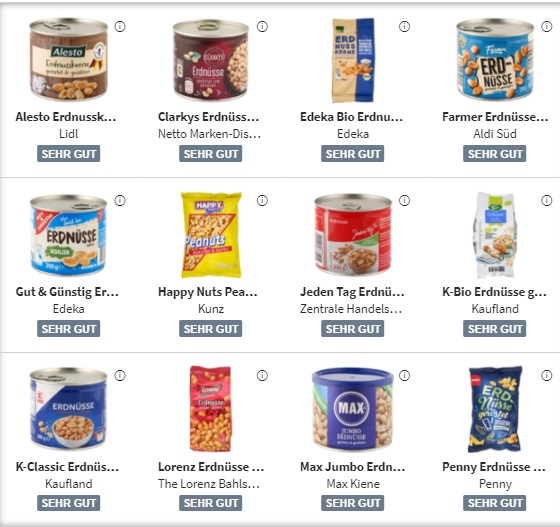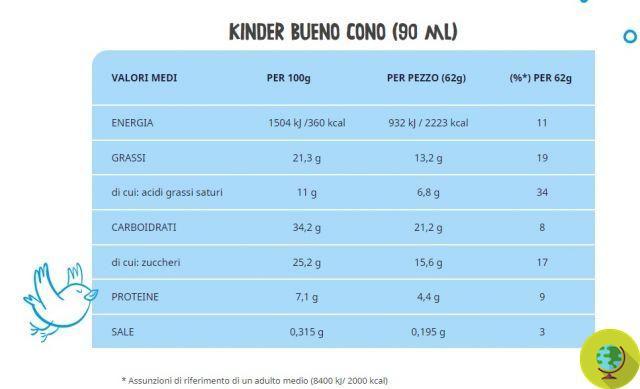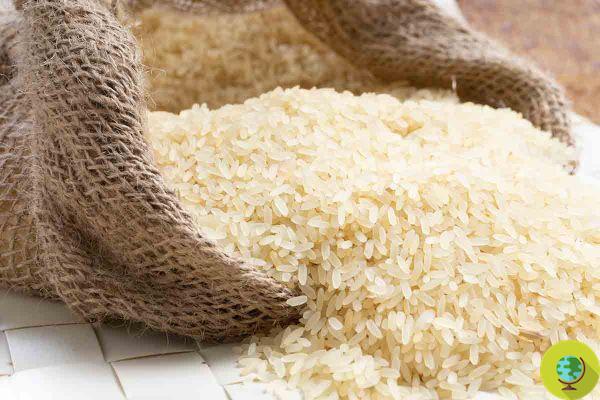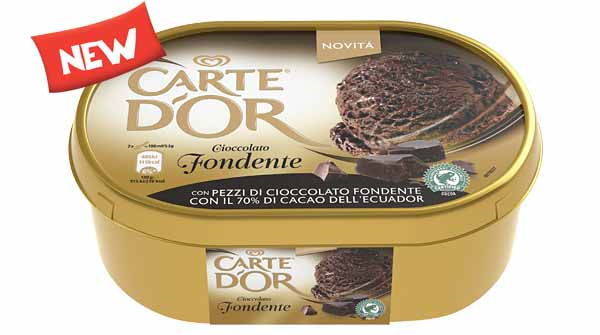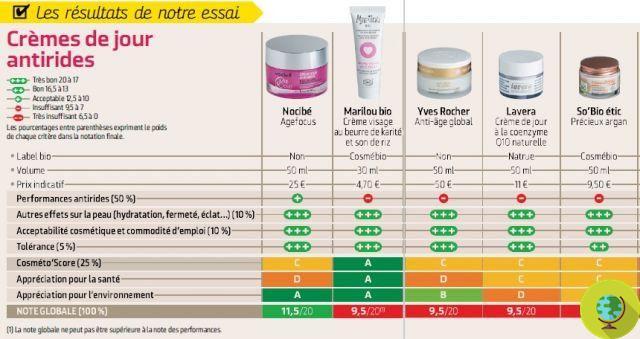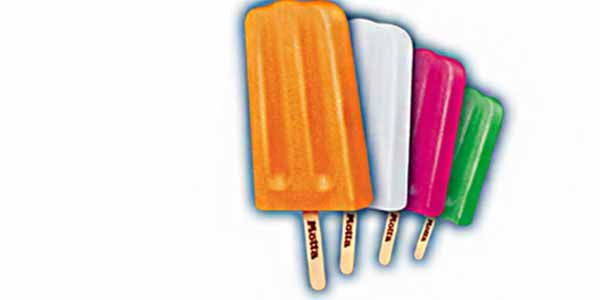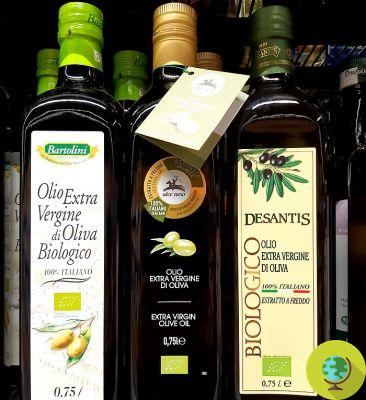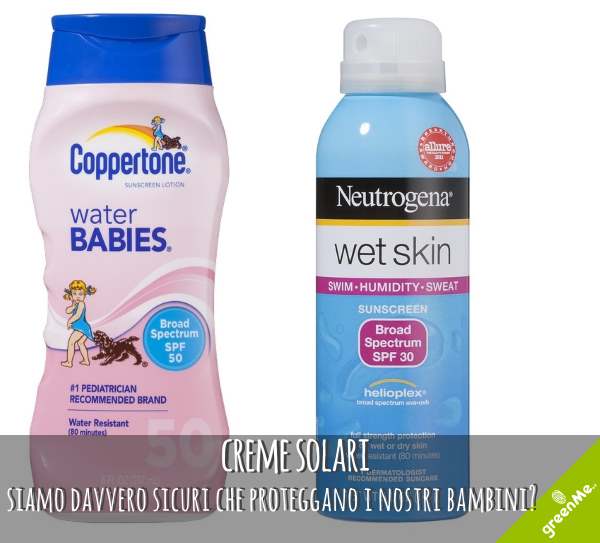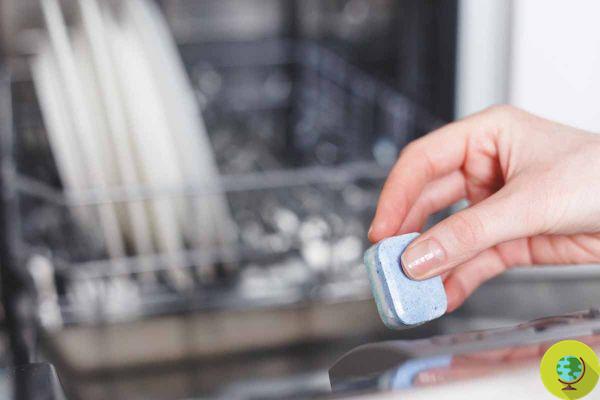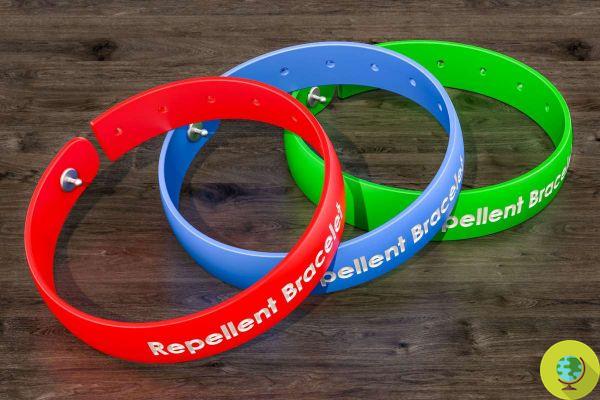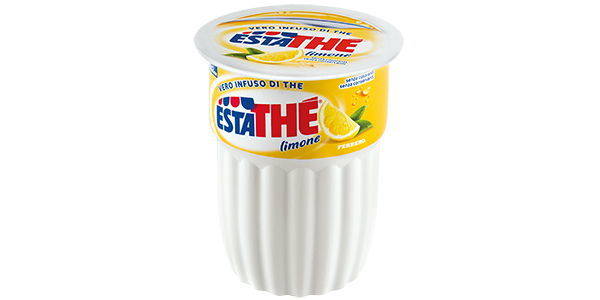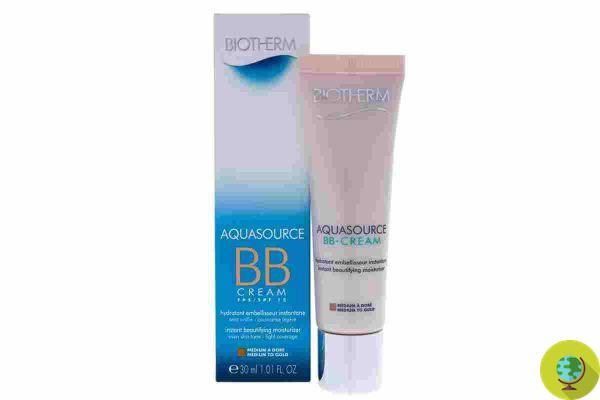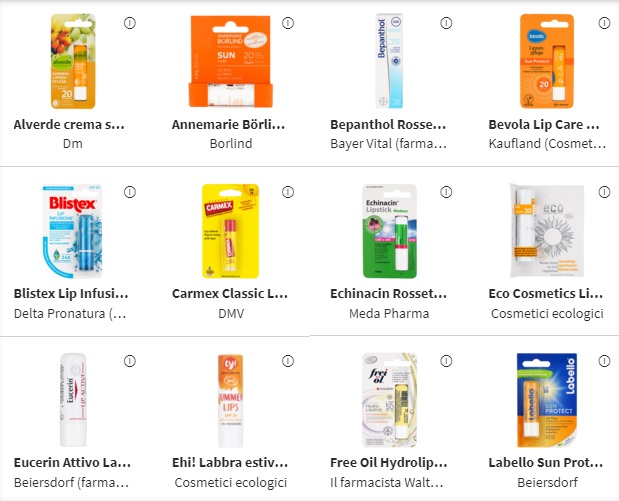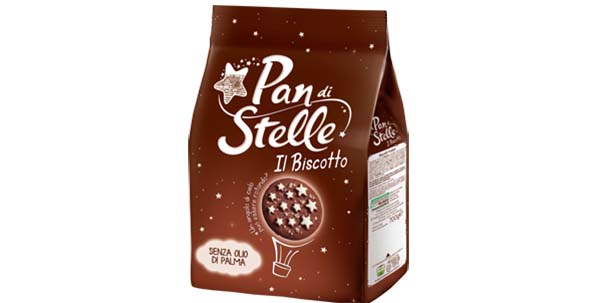A test on canned tuna and packaged fish warns of some unsustainable products or products with opaque information
Don't store avocado like this: it's dangerousWhat does the packaged fish we buy at the supermarket really contain? And what kind of fishing was used to get canned tuna, breaded sticks and surimi on our tables? A new French test tried to answer these questions.
60 Million Consumer ha analizzato 56 seafood products in search of quality and defects of each. Among the parameters considered there was the list of ingredients, the Nutri-Score (French nutritional score), the presence of heavy metals, the content of salt and additives.
The test was also conducted with the help of WWF France which assessed the fishing areas and conditions as well as the status of the various species (more or less at risk), in practice the greater or lesser environmental sustainability of each individual product.
The test included not only cans of tuna (14 natural) but also breaded cod (sticks but not only), brandade of cod and surimi.
Index
Canned tuna
Some of the references tested were rated red in particular because there is a lack of available data on fishing conditions, the magazine explains.
In the canned tuna category, some products were therefore classified as “to be avoided”. The main reason is that they are mostly yellowfin tuna, the stocks of which in the Indian Ocean and, to a lesser extent, the Central-Eastern Atlantic and Pacific, are overfished.
Three references (Petit Navire, Carrefour Discount and Cora) are penalized for the lack of information on fishing methods.
The French magazine recalls the damage caused by trawling and other non-selective fishing methods that lead to the capture of "non-target" species including turtles and cetaceans.
Read also: Illegal and bottom trawling: shocking data reveal how we are emptying the Mediterranean
The Carrefour discount tuna, even if in fourth last position, is still classified with a "green".
However, there are some cans of tuna that come out well from the test as they provide clear indications and guarantee a good state of the stocks of the species as well as fishing techniques with a limited impact on ecosystems.
At the top of the ranking of the best tuna we find all French references, while in the middle of the table there is the Nixe tuna from Lidl which is however reported as excessively rich in salt.
As for the presence of mercury, the magazine reports a certain variability from can to can but only the Cora brand tuna is marked in red in terms of the presence of this metal.
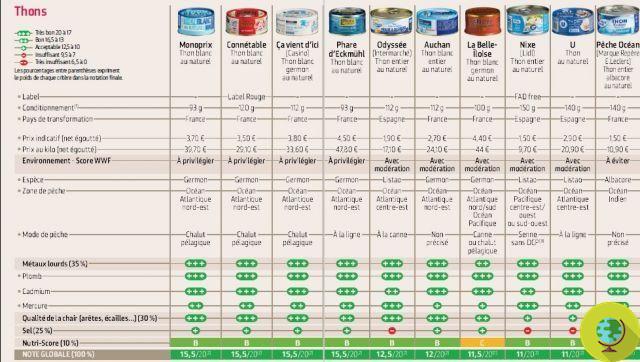
@60 Million Consumers
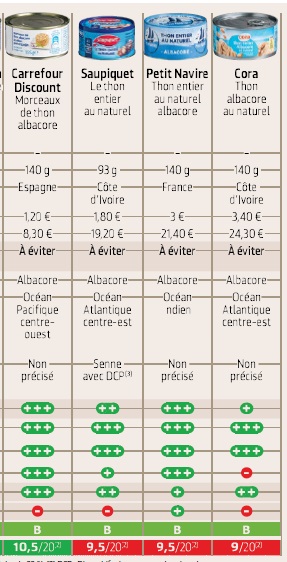
@60 Million Consumers
Sticks and breaded cod
For these products, the problem reported by the test is in particular the lack of information on how to fish. Although often on the packages it is written that it is Alaskan cod, therefore the area of origin of the raw material is indicated, not as specified is how the fishing is carried out which, managed by different countries in a different way, can be done with nets trawl, pelagic or bottom trawl nets and more.
The magazine therefore concludes:
"In light of these elements, we and the WWF believe that consumption must be done 'in moderation' for all references"
Somewhat surprisingly, however, the composition of these products was positively evaluated by the test. The quantity of fish represents 65% to 70% of the product. Aside from spices and canola or sunflower oil, the vast majority of products contain no additives. Marked in red for this aspect only Picard crumbed cod.
In last position in terms of overall score there is the breaded Alaskan cod from Lidl, followed by only half a point of difference from the Findus one while in first place, on a par with other references, there is the Carrefour branded cod fillet. .
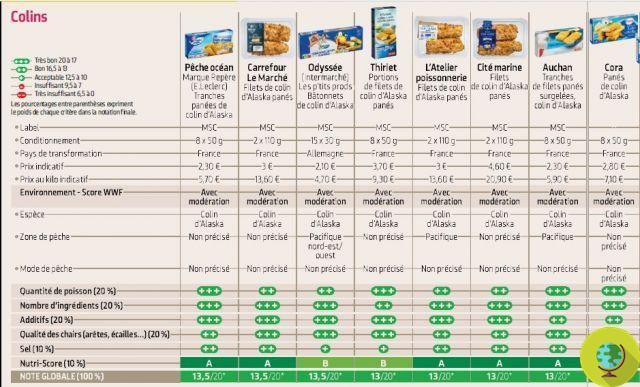
@60 Million Consumers
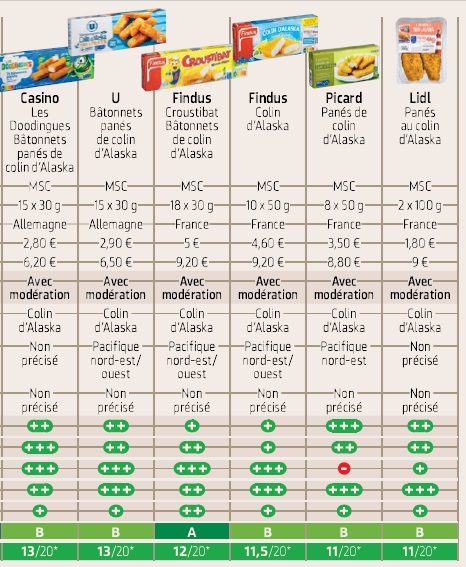
@60 Million Consumers
Beware of cod brandades and surimi
For cod brandade and surimi, the WWF score is red in many cases. In fact, an almost general lack of transparency is underlined and it is considered necessary to avoid consuming the selected products (with one exception).
Even the Northeast Atlantic fishing zone indicated on three brandade packs is considered too large to assess the sustainability of the cod stock. The same goes for the fishing arrangements. The overall scores obtained by the products were therefore all reduced by 33%.
The amount of fish in brandades, which in theory should be 100% cod, is actually very variable, more so than in breaded cod. The Auchan brand, for example, has only 23% cod.
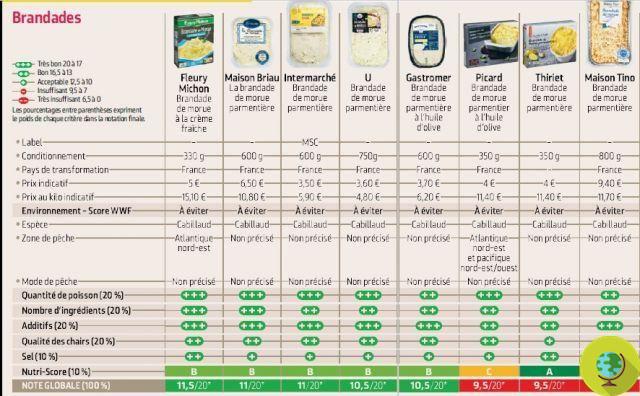
@60 Million Consumers

@60 Million Consumers
Very similar situation also for he surimi, according to the parameters considered by the WWF, just like brandades, all products should be avoided, with the exception of the Compagnie des Pêches Saint-Malo branded product, which is reported to be consumed "in moderation".
This product was awarded because, unlike what usually happens, it uses only one type of fish to make surimi: the Northeast Atlantic blue whiting. Generally, however, different species are fished including Alaskan cod, hake and others, even in areas where the stocks are at risk.
All references, in this case, were marked in red for too much salt.
At the bottom of the ranking we find the surimi Auchan and the Lidl one.
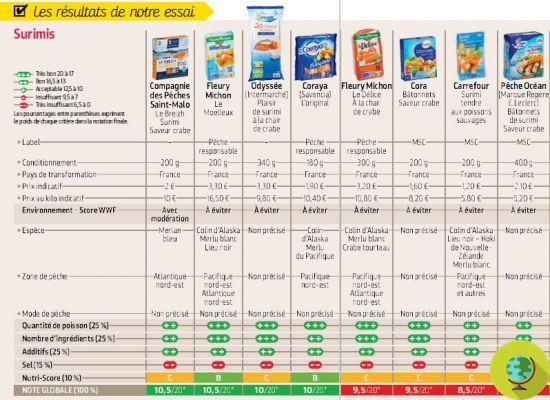
@60 Million Consumers
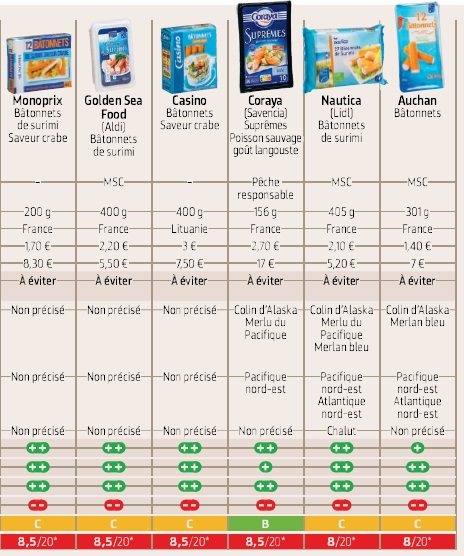
@60 Million Consumers
In conclusion of the test the magazine writes:
“Most brands have a long way to go when it comes to information and sustainability. Fortunately, some are doing well, especially in the canned tuna category ”.
Cast Iron: 60 Million Consumer
- Canned tuna: watch out for oil and species. The brands promoted and rejected by Altroconsumo
- The spasmodic passion for sushi and 'all you can eat' restaurants have increased tuna fishing by 1000%
- Fish, we consume too much and badly. Here's how to make responsible choices





